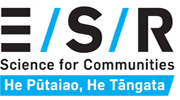The project is part of the Vision Mātauranga Connect Scheme, joining together scientists from ESR with Te Rūnanga o Ngāi Tahu (TRoNT) and their Ngāi Tahu Papatipu Rūnanga and communities to help improve their knowledge and understanding of food safety risks associated with mahinga kai.
The environmental risk assessment framework being developed will build on current water quality data collected by local councils as part of their routine monitoring programmes. It will integrate existing food safety standards for commercial food products, as well as local, historical and cultural knowledge held by rūnanga/hapū/ whānau of mahinga kai and environmental factors which influence it.
This research will assist in closing the knowledge gap around food safety hazards associated with mahinga kai, to ensure that the gatherers can make informed decisions. ESR will share their scientific knowledge, while whānau/hapū/rūnanga will share their mātauranga Māori in regards to practices around the collection and preparation of mahinga kai. For each site, the commonly gathered species will be identified and the surrounding environment will be assessed for relevant risk factors. This will be done from both a mātauranga Māori and western science perspective. This information will then be used to determine any food safety risks associated with the mahinga kai.
The traditions surrounding the gathering of mahinga kai are a vital part of Māori culture and play an important role within whānau/hapū/ rūnanga. The outcomes from the project will provide the foundation for the development of resources available to gatherers on the food safety of mahinga kai.
